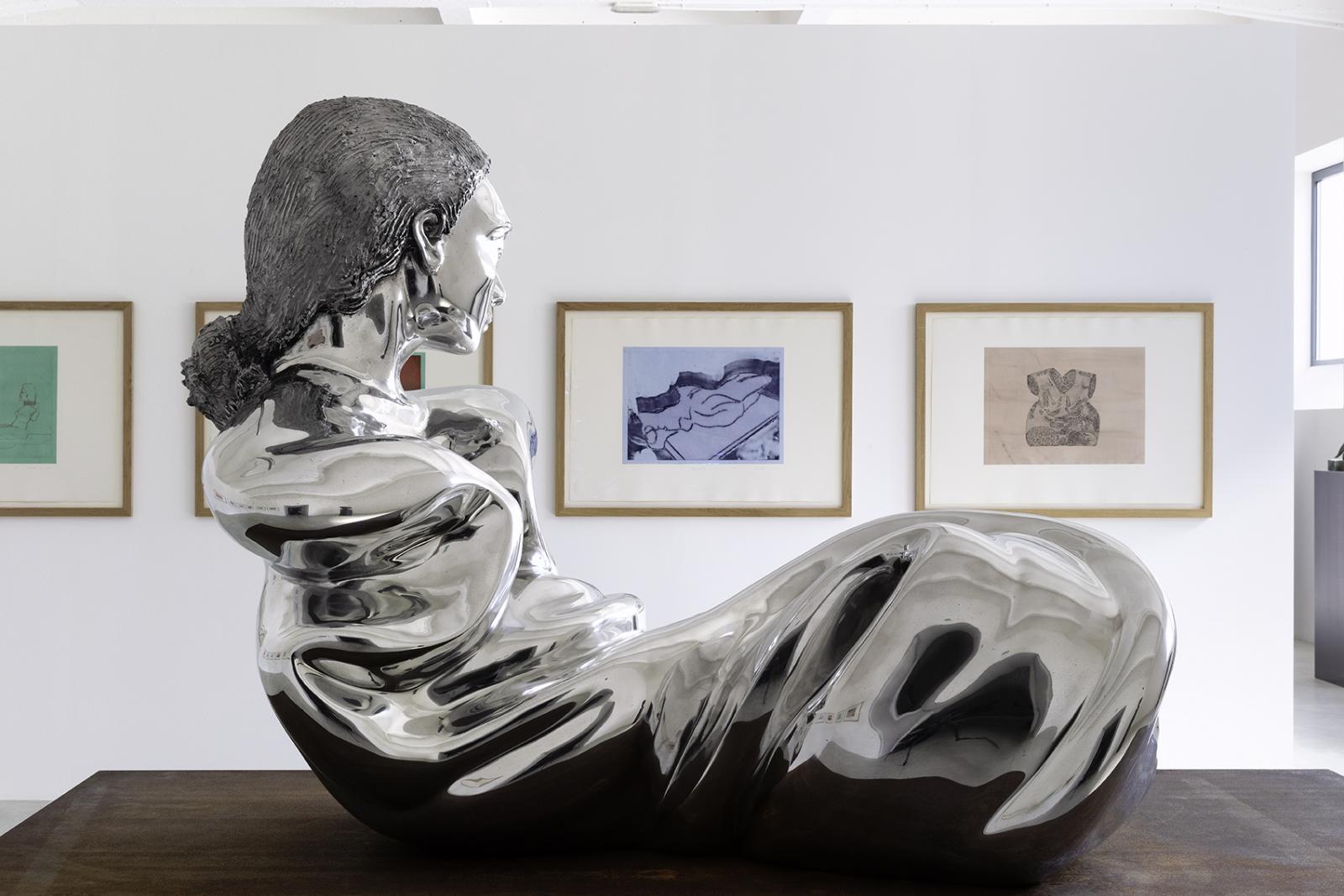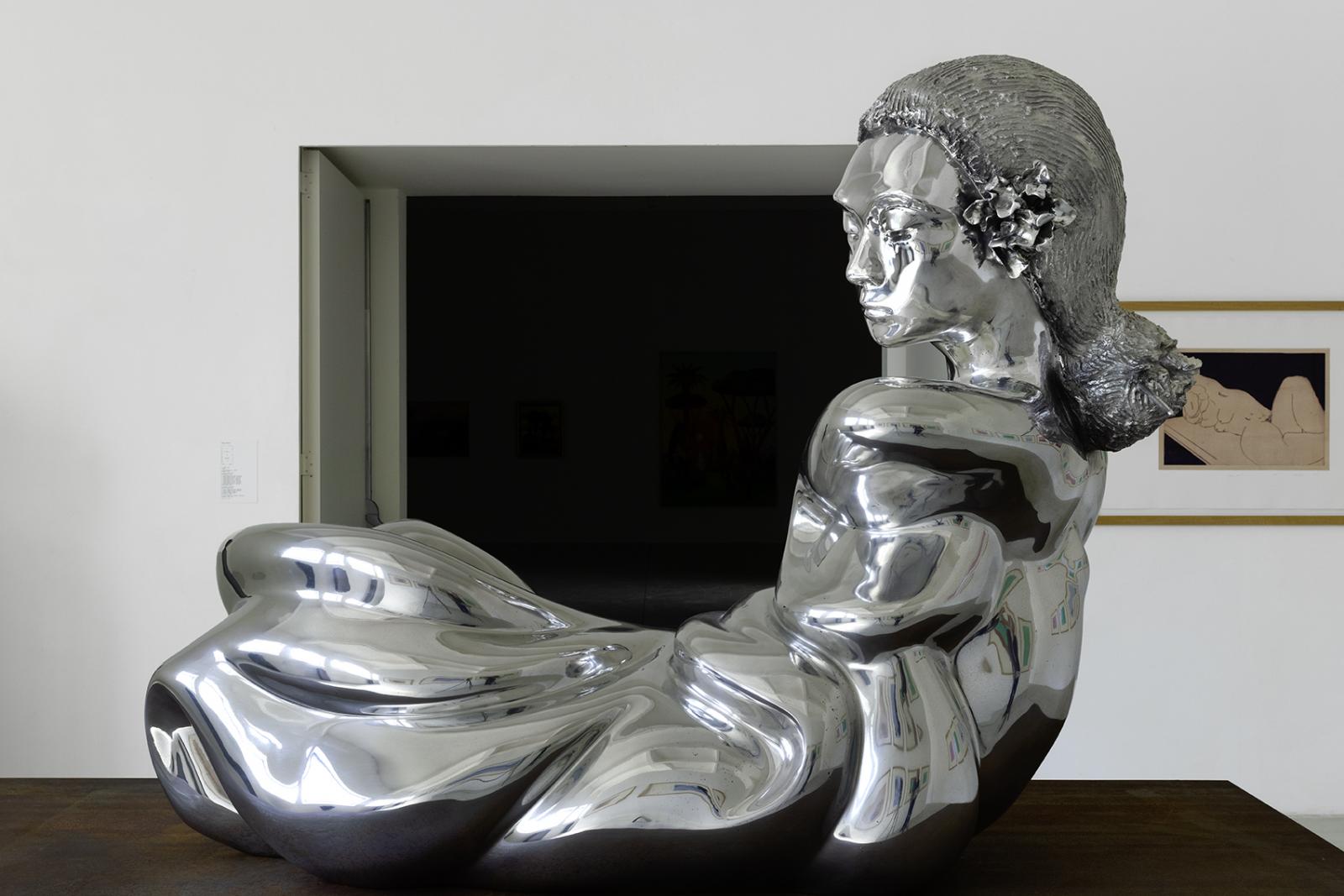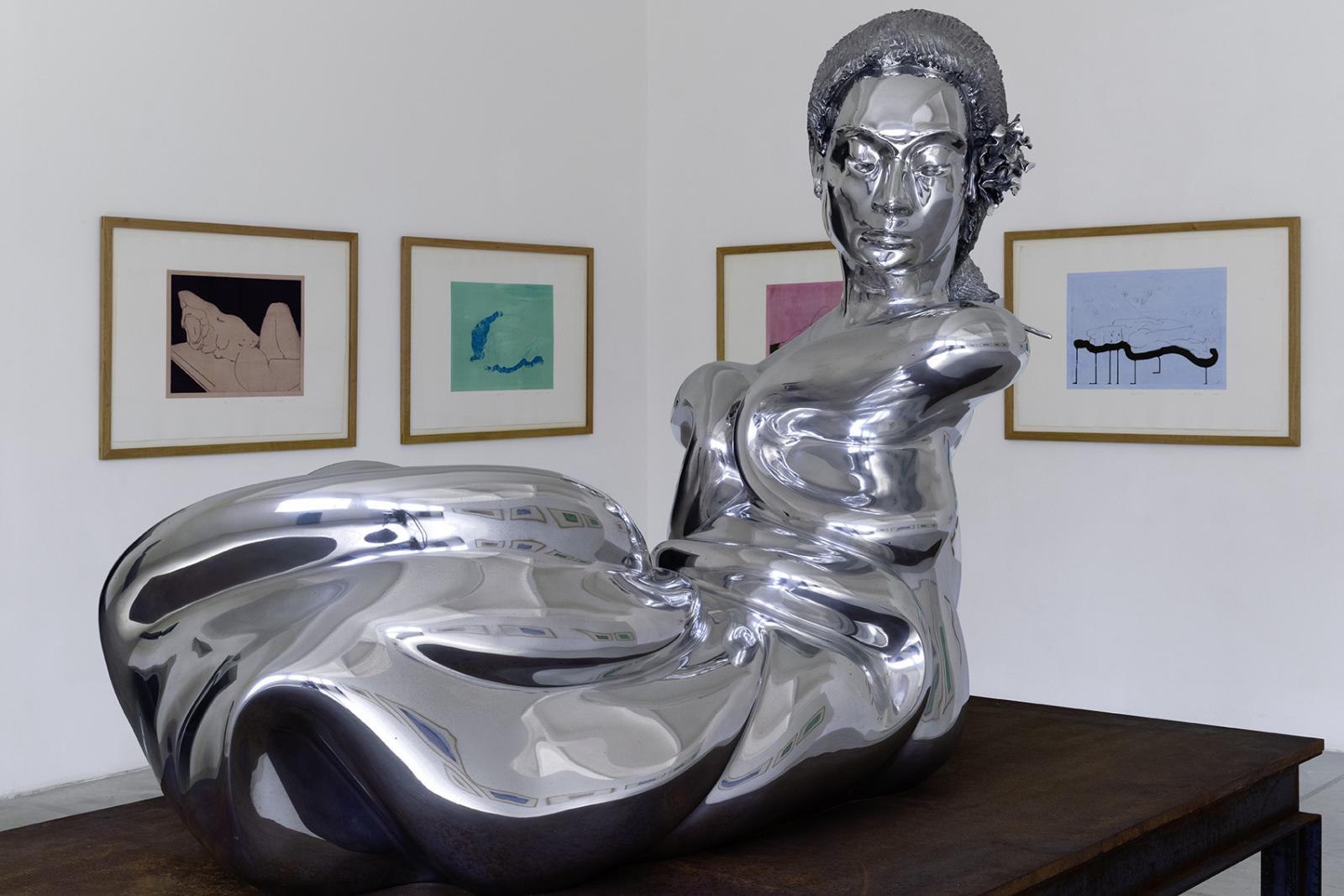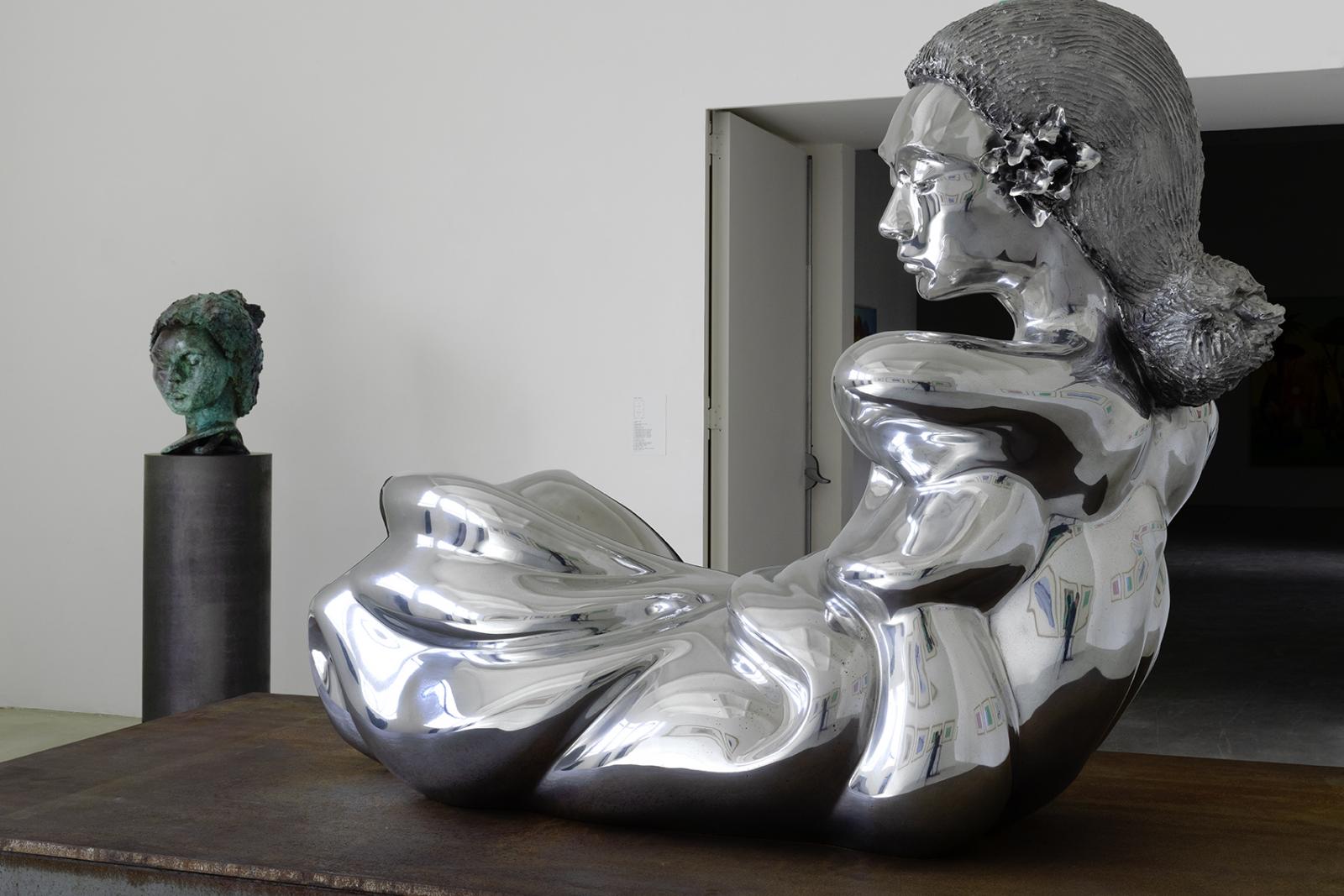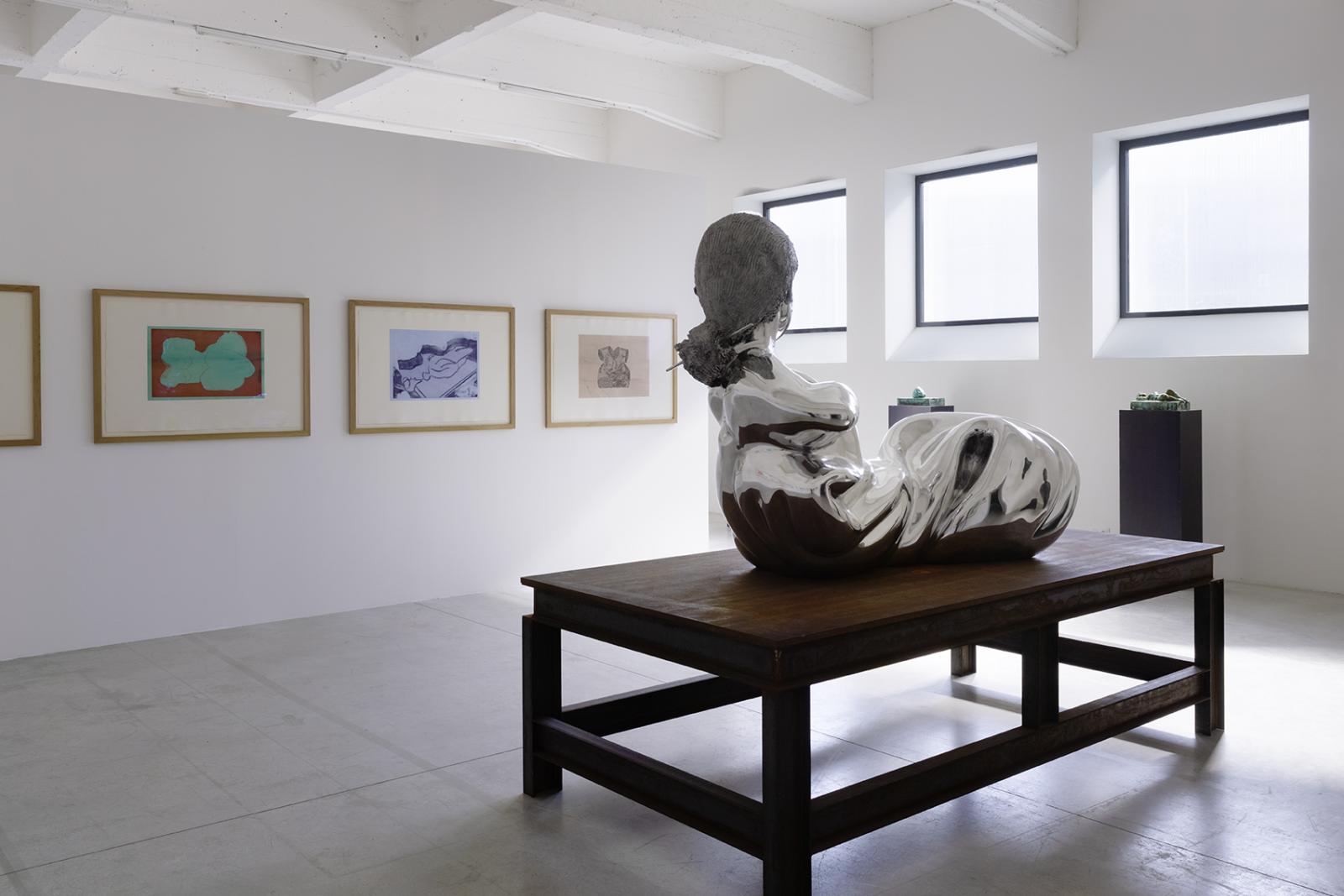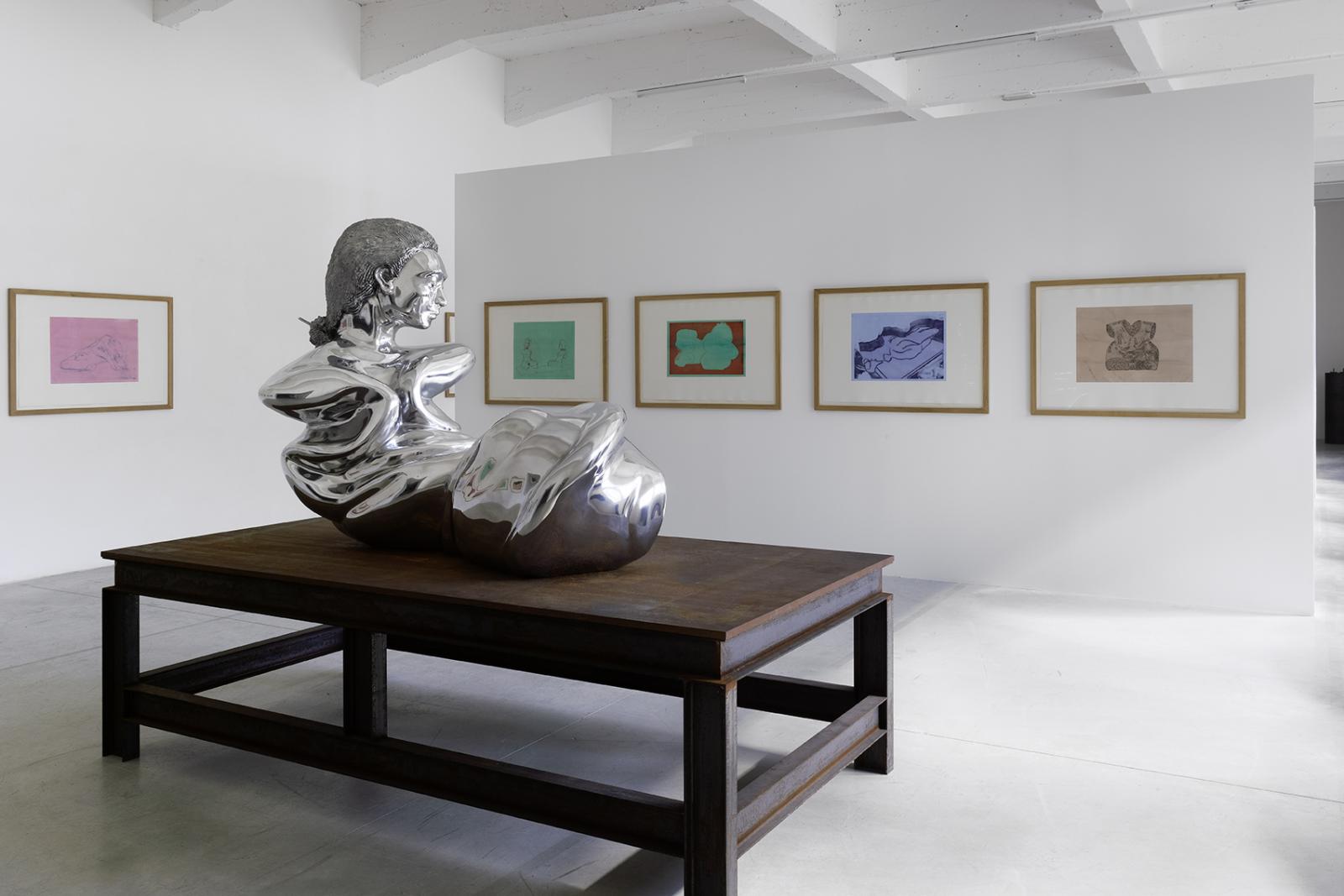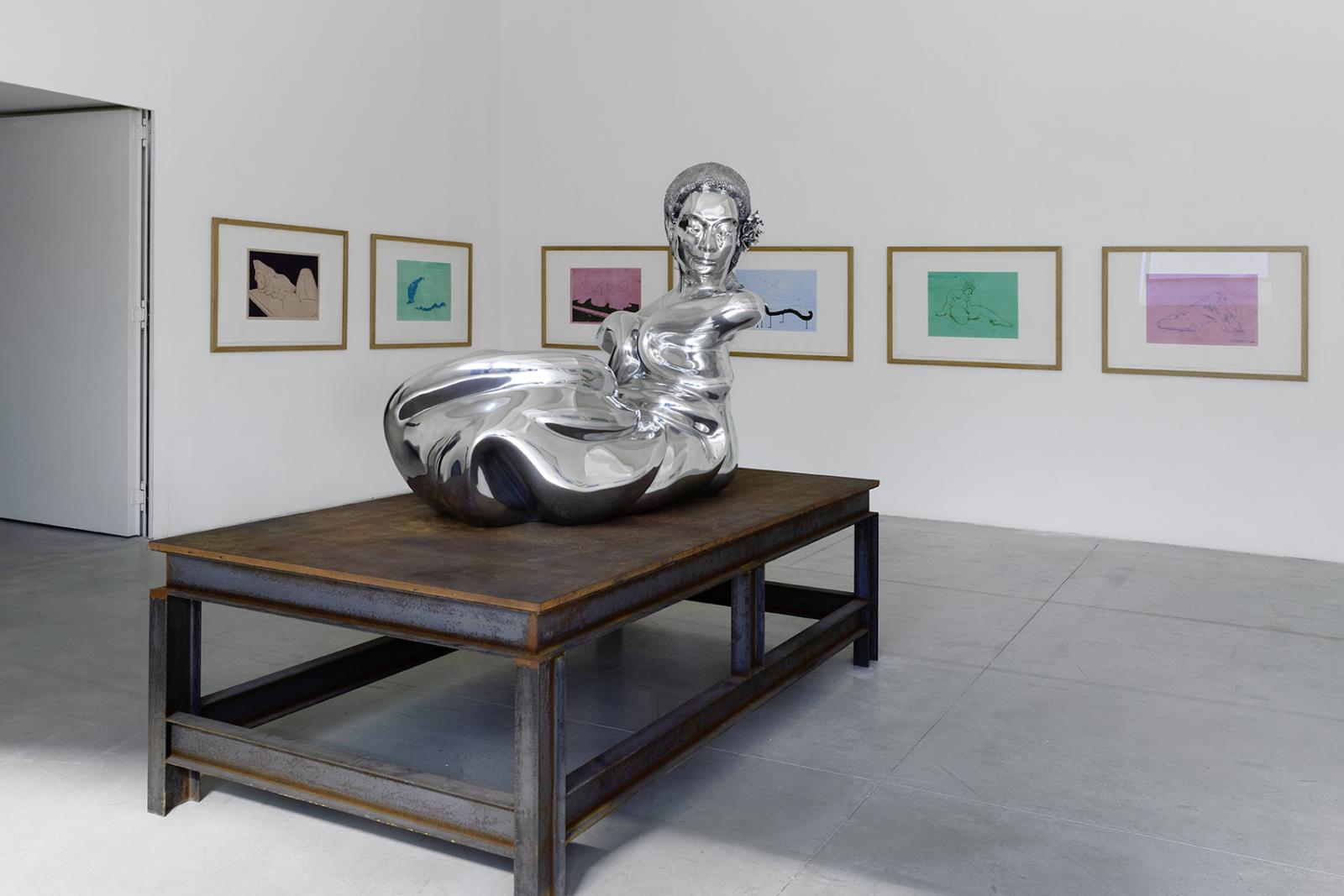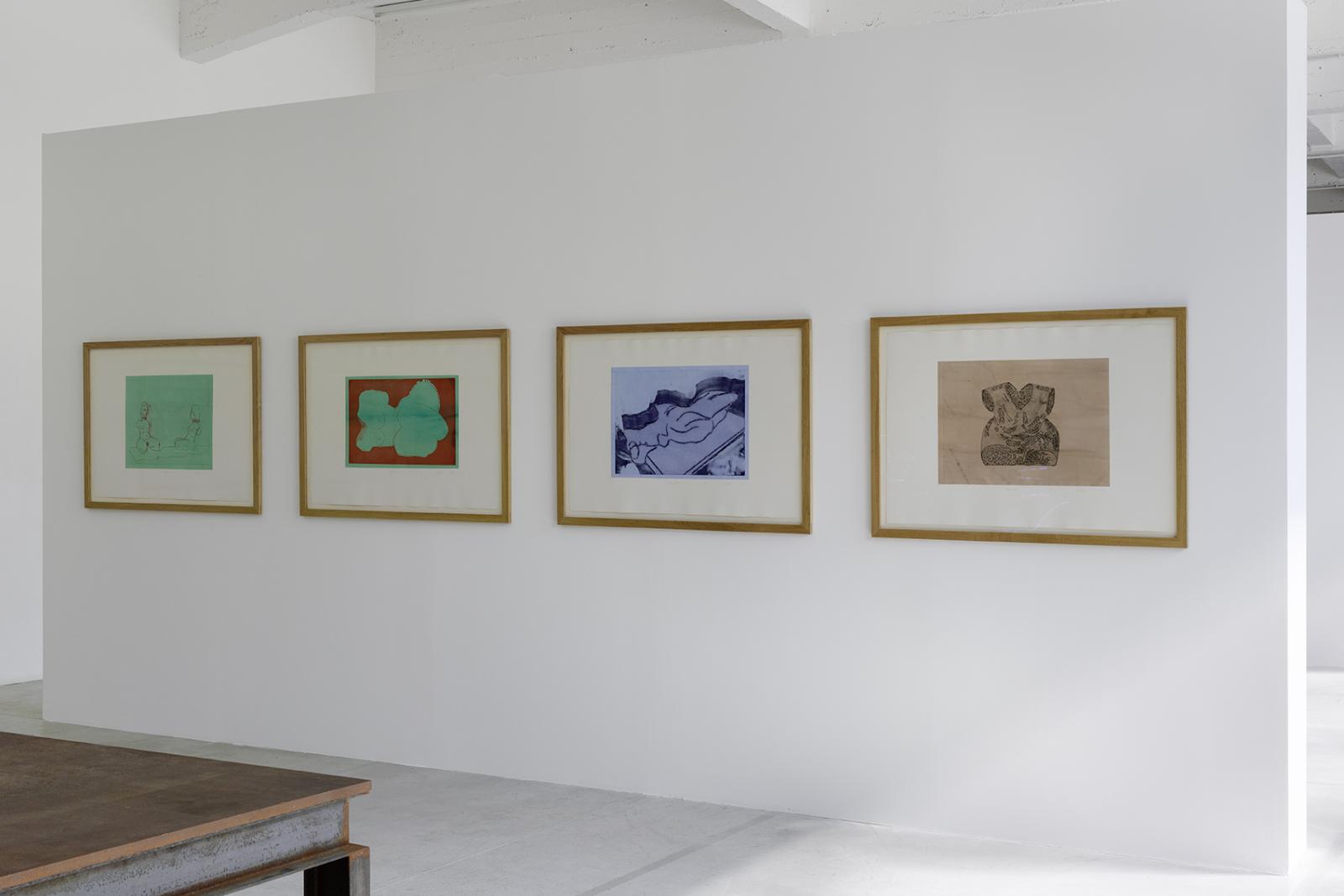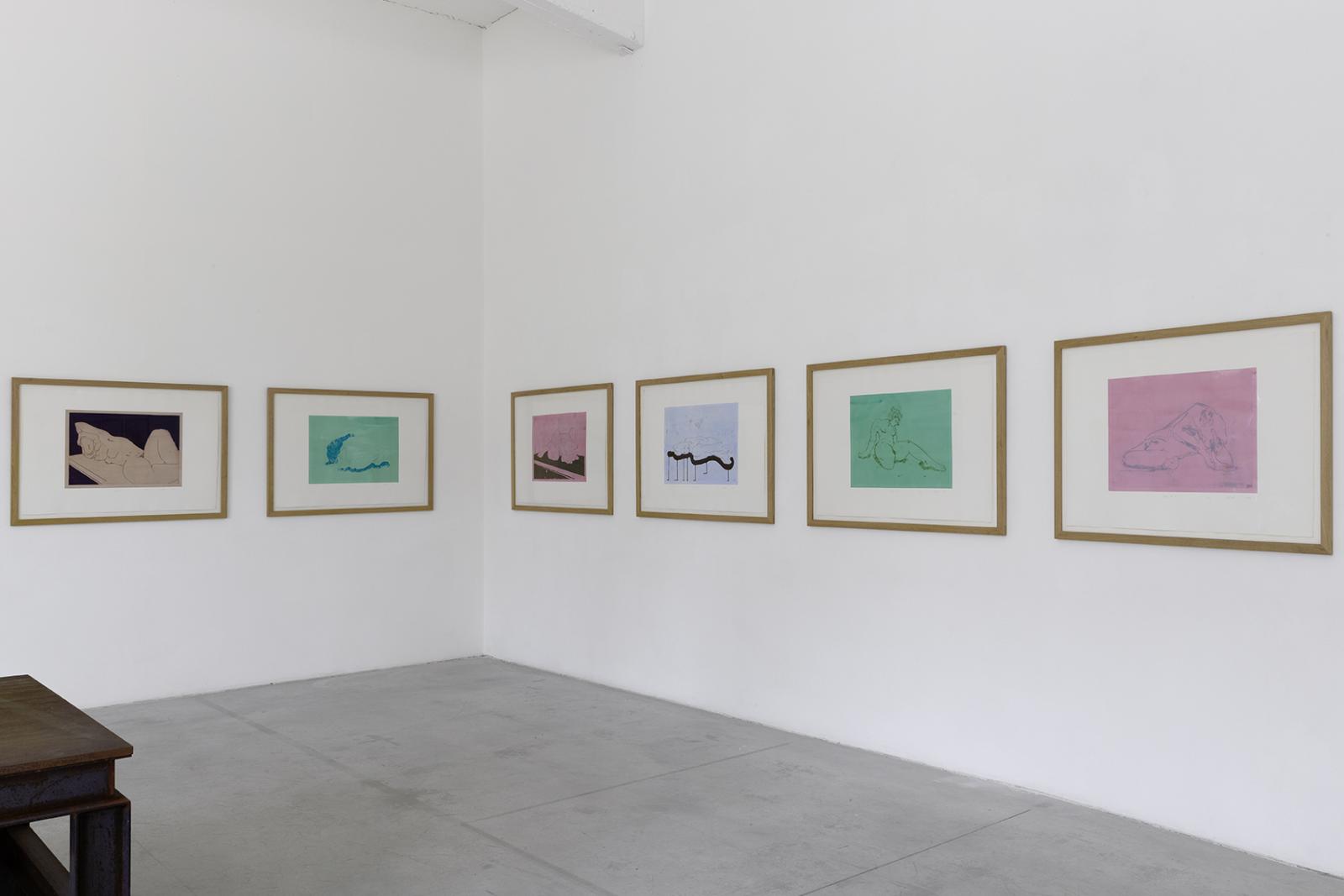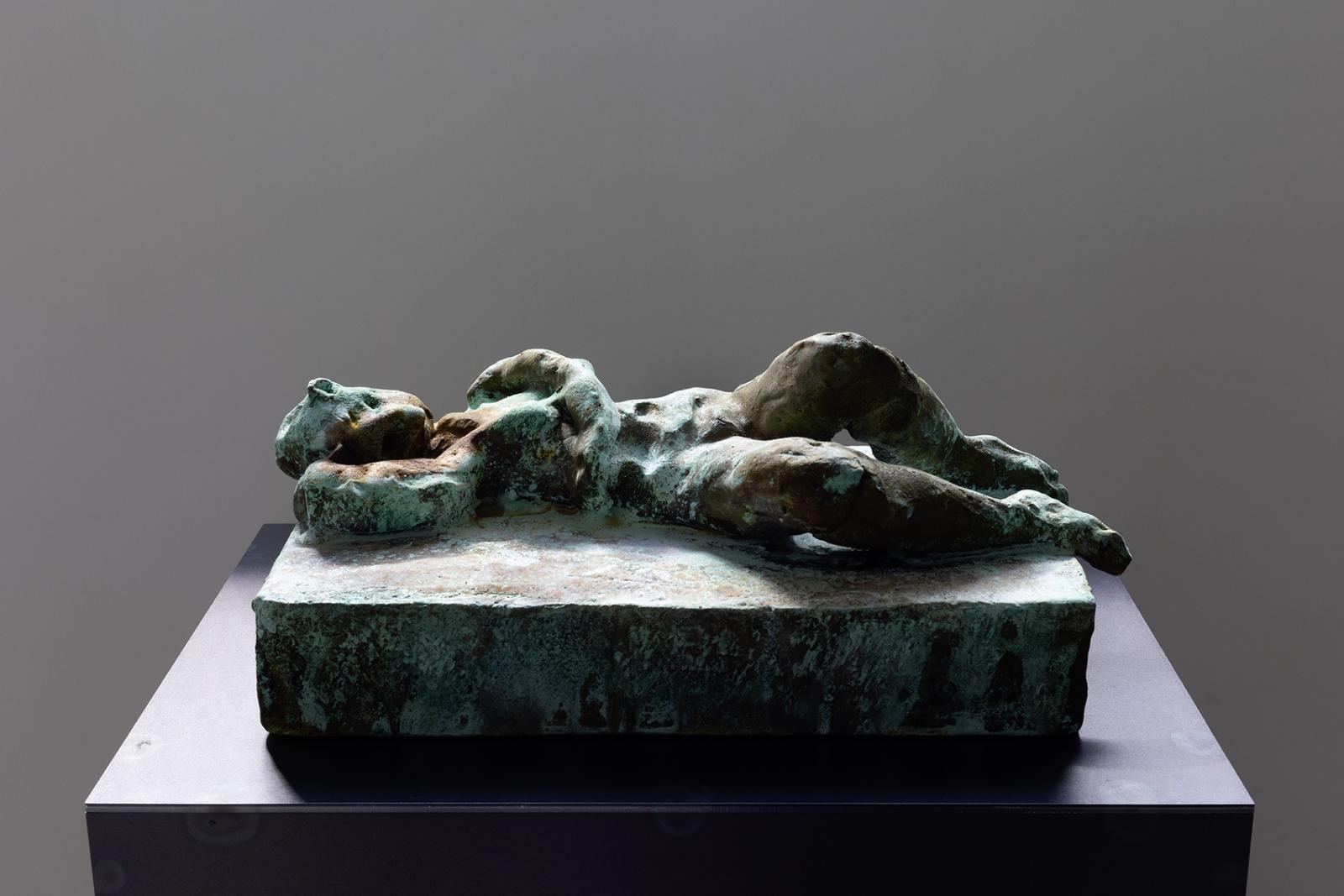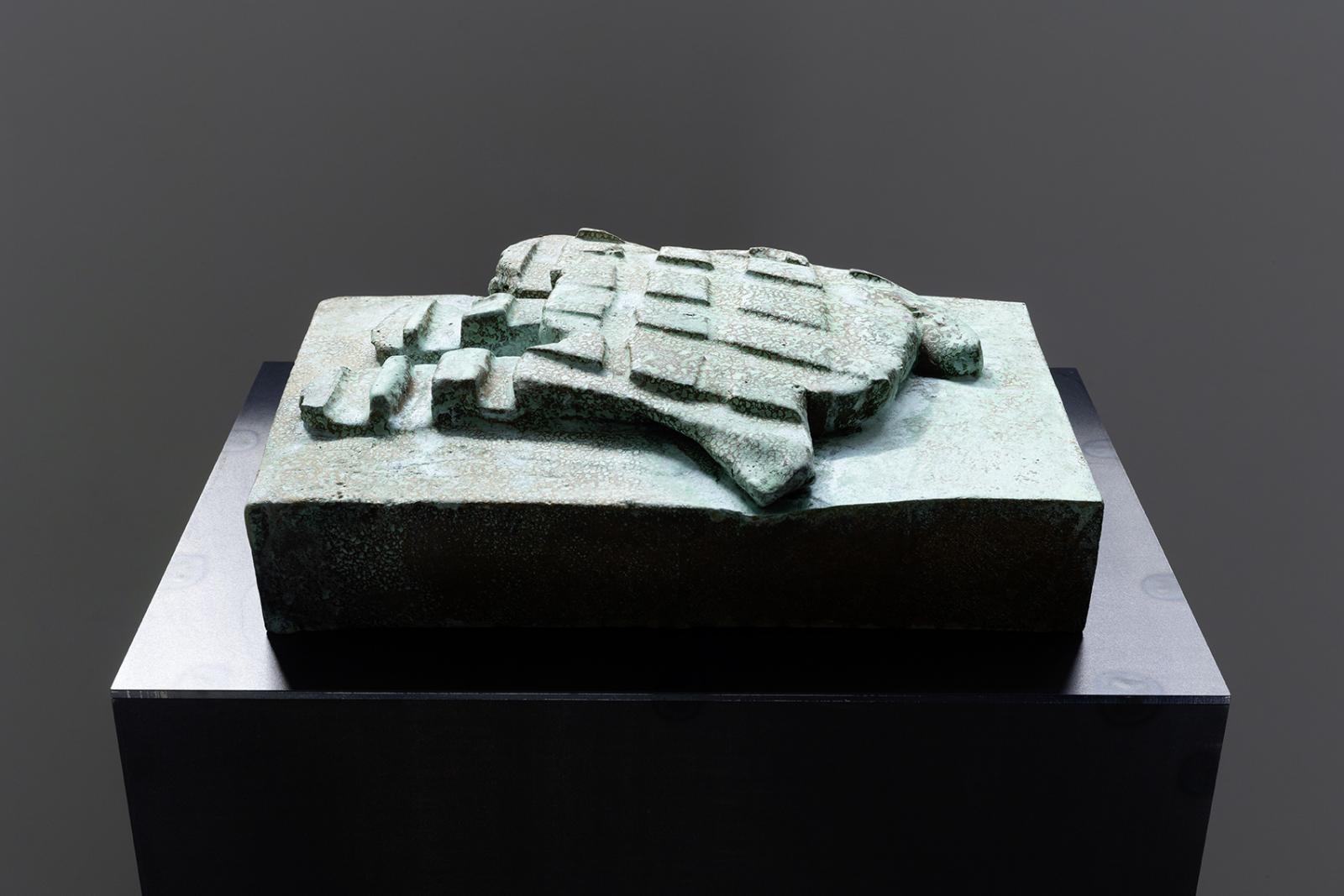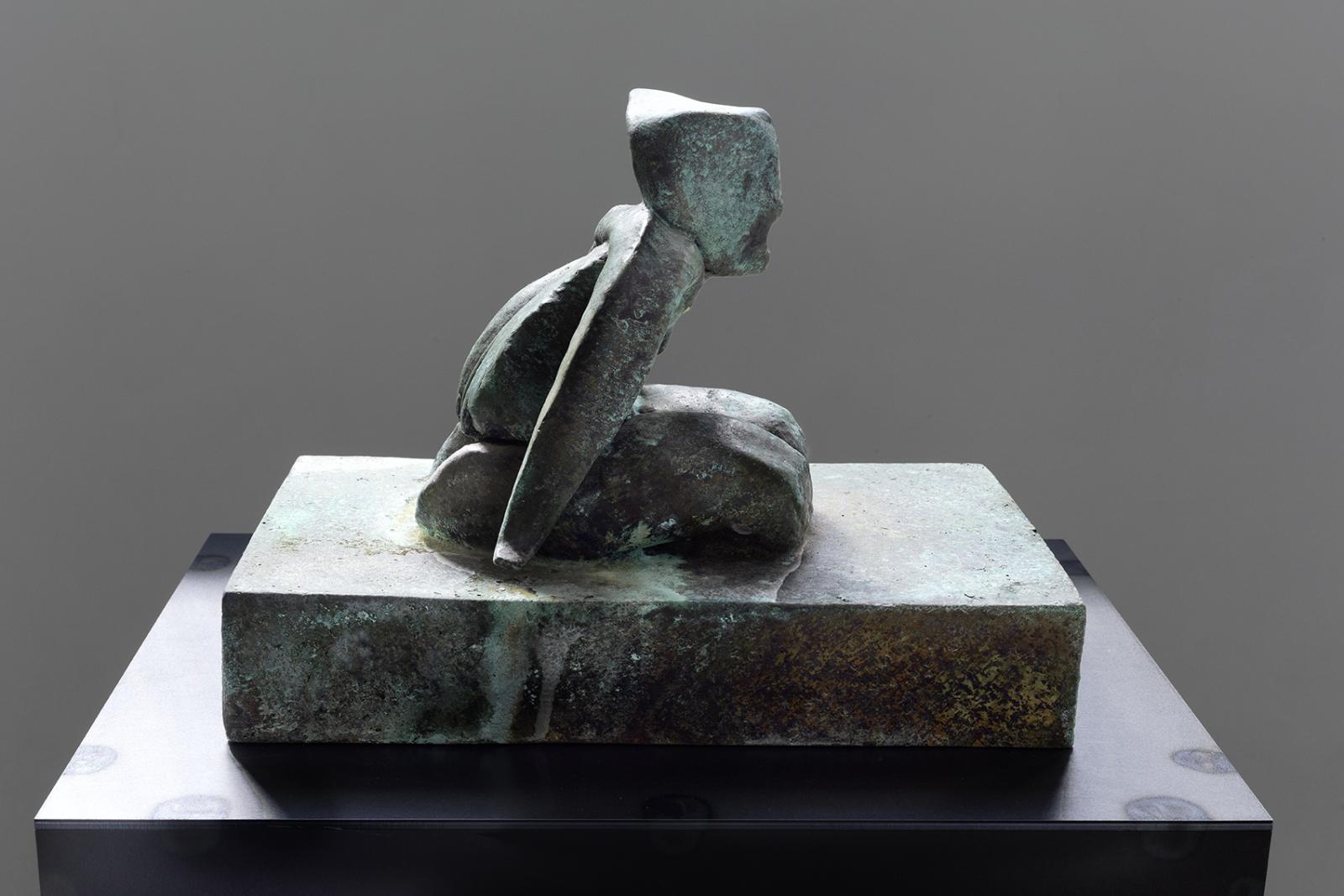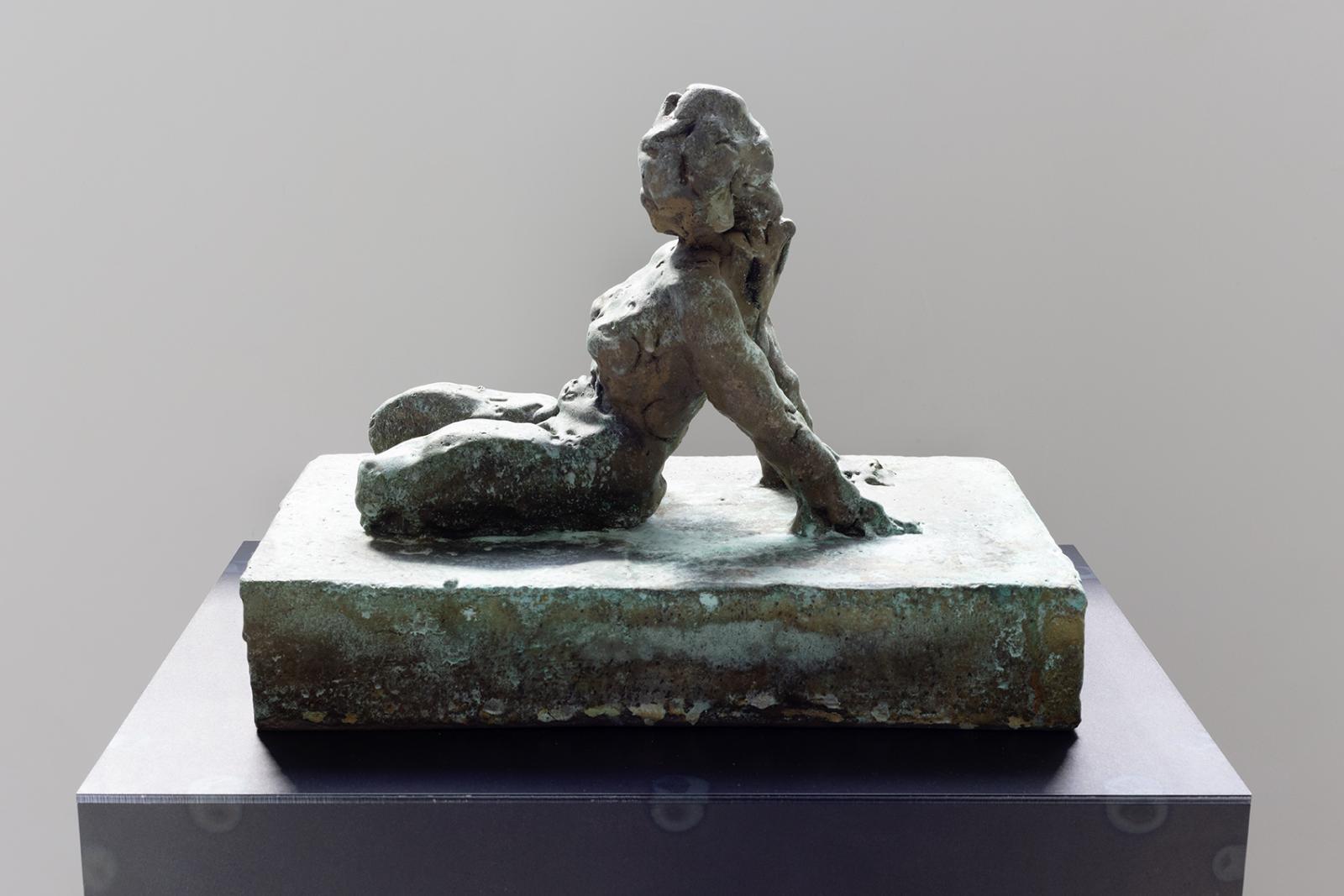Thomas Schütte
L'Almanach 18 : Thomas Schütte
Spread out over more than 250 square meters, the exhibition conceived by Thomas Schütte for L’Almanach 18 expands on the one he produced at the beginning of 2018 at the Kunstverein in Oldenburg, the city where he was born in 1954. It presents a significant body of works in which the human figure is subjected to all sorts of distortions; where faces are often replaced by grimaces as in Fratelli (2012/2017), whose four red lacquered aluminum busts are presented in the middle of the exhibition.
A student of Gerhard Richard at the Kunstakademie Düsseldorf from 1973 to 1981, Schütte has been developing since the 1980s an oeuvre influenced by conceptual and minimal art, and by architecture or stage sets, music, and film. The introduction of figurative terracotta sculpture in the 1990s led him to relentlessly explore the representation of the human figure, at a time when this project could appear reactionary in the context of the avant-gardes.
This exhibition brings together the eight individual elements of Frau, a piece he worked on between 2007 and 2017. These eight patinated bronze sculpture on steel pedestals punctuate the visit, depicting women in suggestive poses evocative of famous art historical feminine representations.
Schütte works in series, which he constantly revisits: the exhibition presents a significant grouping from Mann in Matsch, whose central figure, a man stuck in mud, first made an appearance in 1982 in a sculpture/model representing him in a fictional landscape. A recent version of this work is presented in the exhibition, along with an anthology of its most recent developments: Mann im Matsch mit Fahne, Mann im Matsch mit Hut. The ten elements of the Alte Freude series (2010) show the most flagrant aspects of man’s vulnerability: throughout the whole exhibition, figures of men and women seem to confront each other in every respect. Few doubts remain as to Thomas Schütte’s ideas about the wretchedness of men and the grandeur of women: the monumental Aluminiumfrau n°17 (2009) in aluminum and steel placed at the exhibition’s entrance is a glaring demonstration
— Eric Troncy
